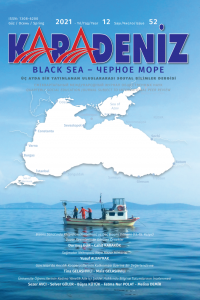TÜRK İSLAM SANATINDA SURET: KUBAD-ABAD SARAYI SİREN TASVİRLİ ÇİNİLER VE ESTETİĞİ
FORM ON THE TURKISH ISLAMIC ART: SIREN DEPICTED TILES AND AESTHETICS OF KUBAD-ABAD PALACE
Author(s): Banu DAVUN, Yusuf AlbayrakSubject(s): Cultural history, Visual Arts, Islam studies, History of Art
Published by: Kültür Ajans Tanıtım ve Organizasyon
Keywords: Kubad Abad Palace; Selchuklu Art; Tile Art; Form; Aesthethic; Siren;
Summary/Abstract: Kubad Abad Palace that is located within the borders of Beysehir and on the southwest coast of Beysehir Lake was built by 1st Alaaddin Keykubat. Kubad Abad Palace consist of about twenty buildings with its environment and inner walls. There are rich tiles on the inner walls of the Kubad abad palace. Most of the wall tiles of Kubad Abad Palace that have survived to the today with only a few wall remains have been unearthed. Patterned, figurative and written tiles on the walls of the palace are exhibited on the in Konya Karatay Museum. The walls of the palace are decorated with classical arabesque composition patterns, figures and written octagonal stars, square and cross-shaped tiles connecting them. Painting or depiction in Islamic arts is an art that has been met with a careful attitude due to certain reasons. Due to this attitude, it showed itself as a miniature art and developed. Human figures are the most important examples among the figured tiles in Kubad-abad Palace. These figures, which symbolize the Sultan and his relatives, are depicted cross-legged in Turkish style. Double and single-headed eagles, dragons, which are symbols of longevity, healing and exorcism, birds, fish, elephants, peacocks, horses, donkeys, lions, tigers, Dogs, various hunting animals such as rabbits, mountain goats, waterfowl, mythological creatures, sphinxes, sirens and griffins as well as human figures are also seen on these tiles. These tiles which encounter various animals, fairy-tale creatures and symbols from Asian Turkish mythology, have brought rich works to Turkish-Islamic art. In terms of shape, glazing material, color technique and aesthetic properties, these rich tiles which depict human and fairy-tale animal figures at the plastic level will shed light on future studies. The siren depictions on tiles subject to our article will be evaluated both historically and aesthetically.
Journal: Karadeniz Uluslararası Bilimsel Dergi
- Issue Year: 2021
- Issue No: 52
- Page Range: 197-211
- Page Count: 14
- Language: Turkish

